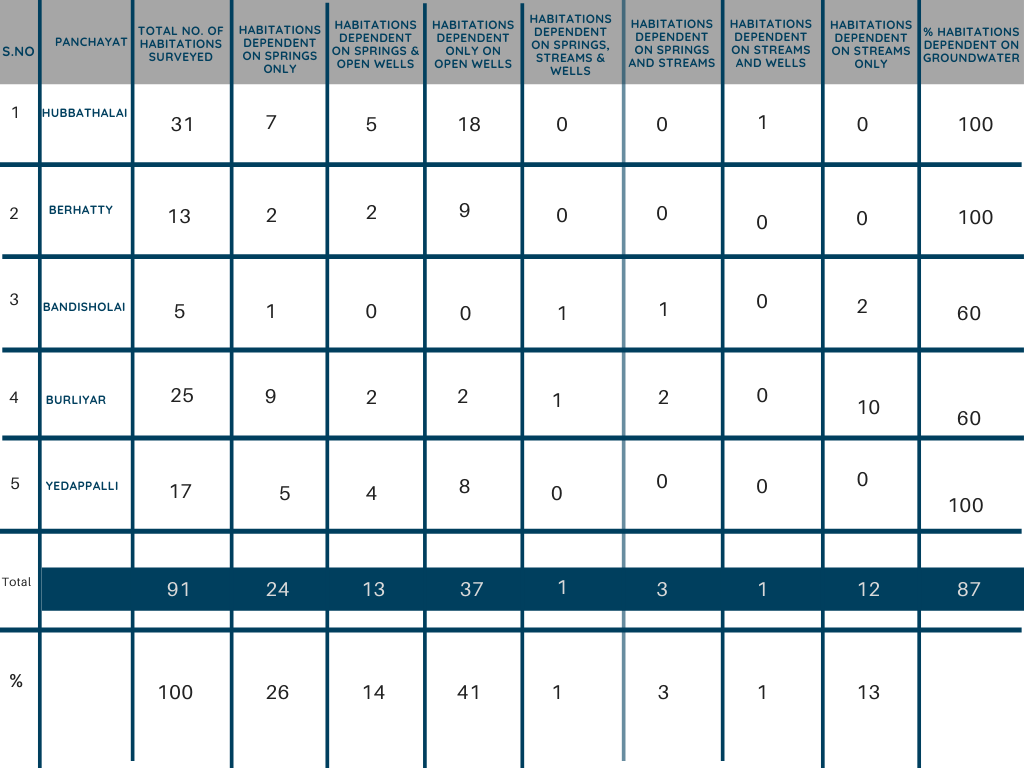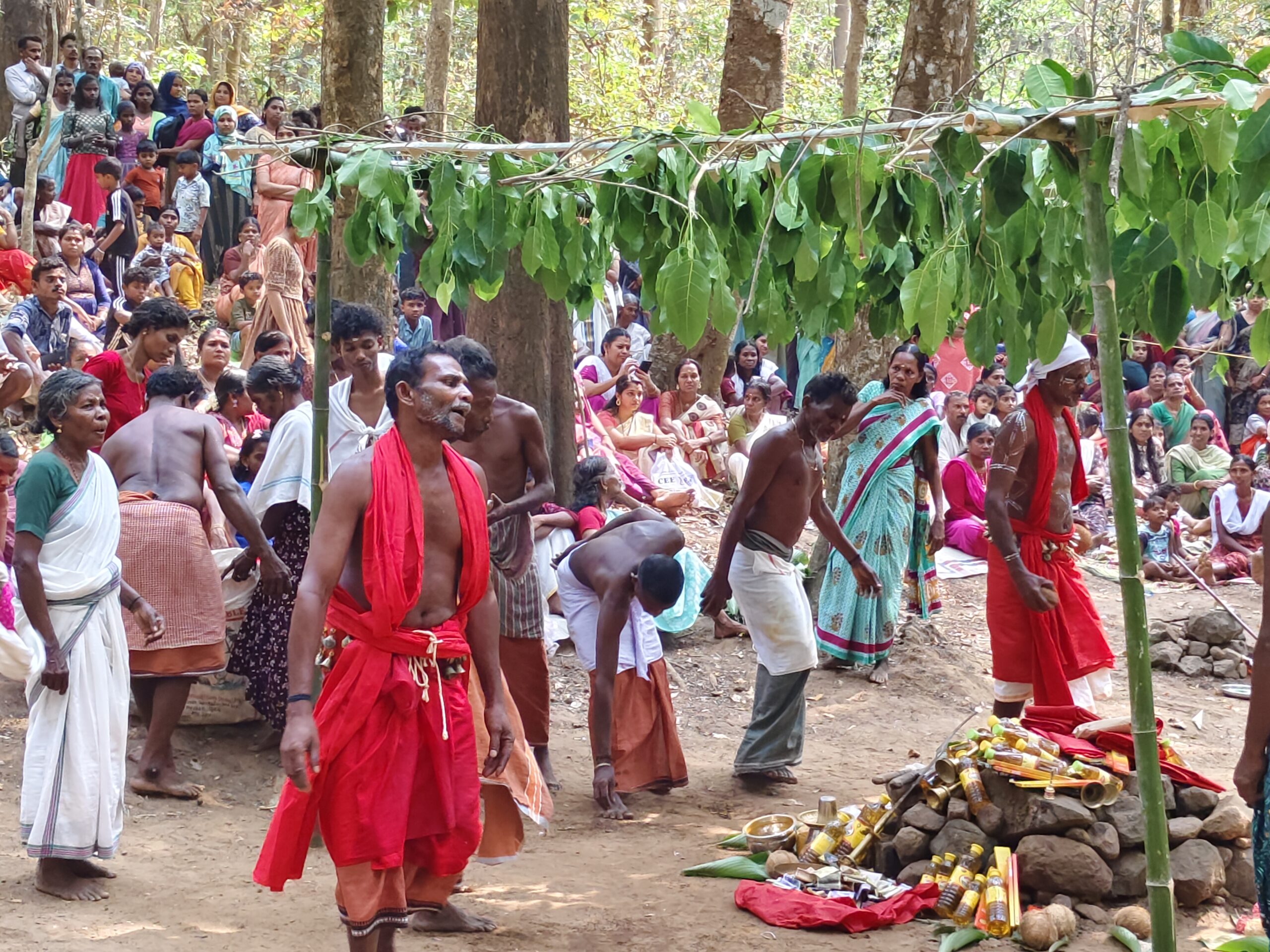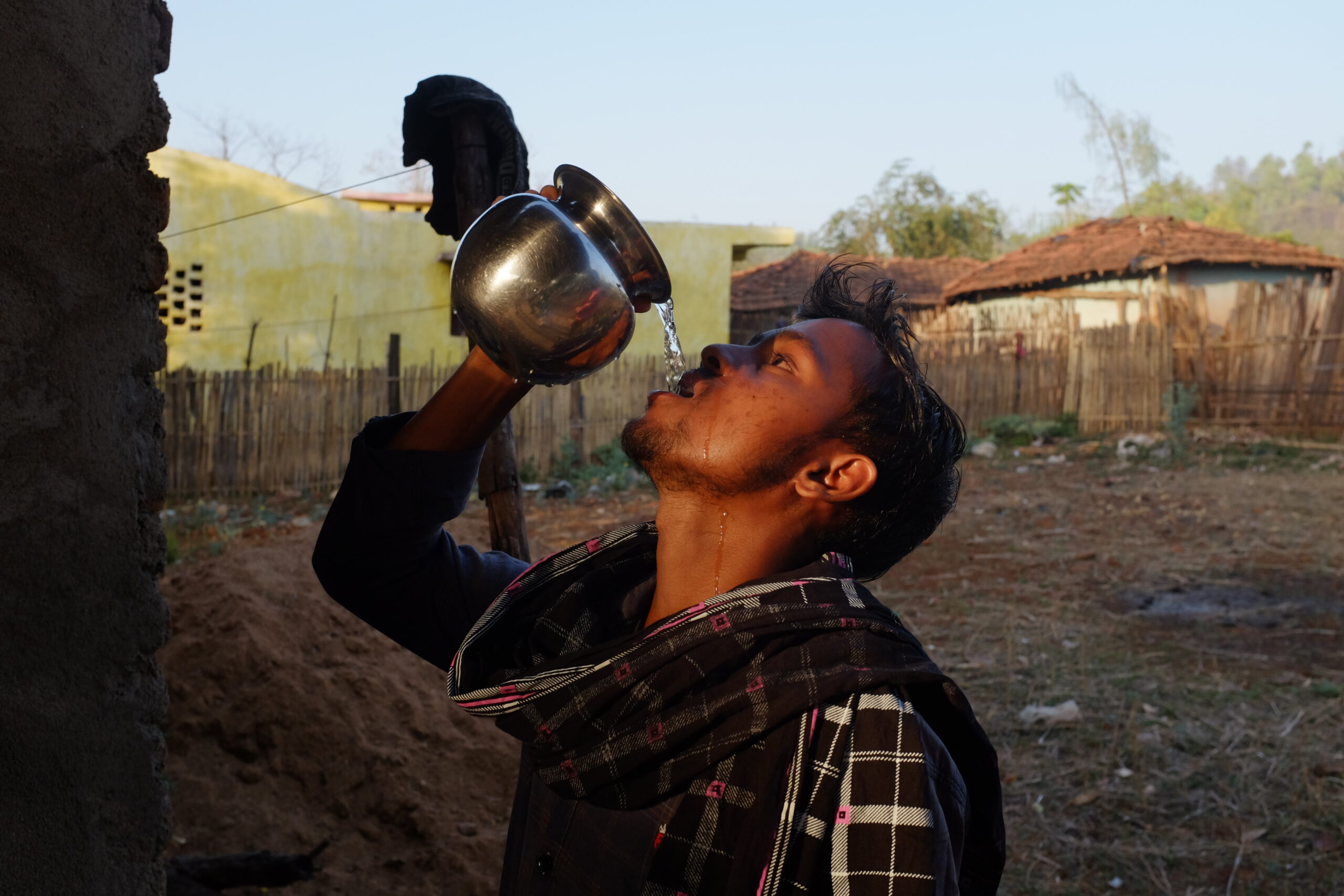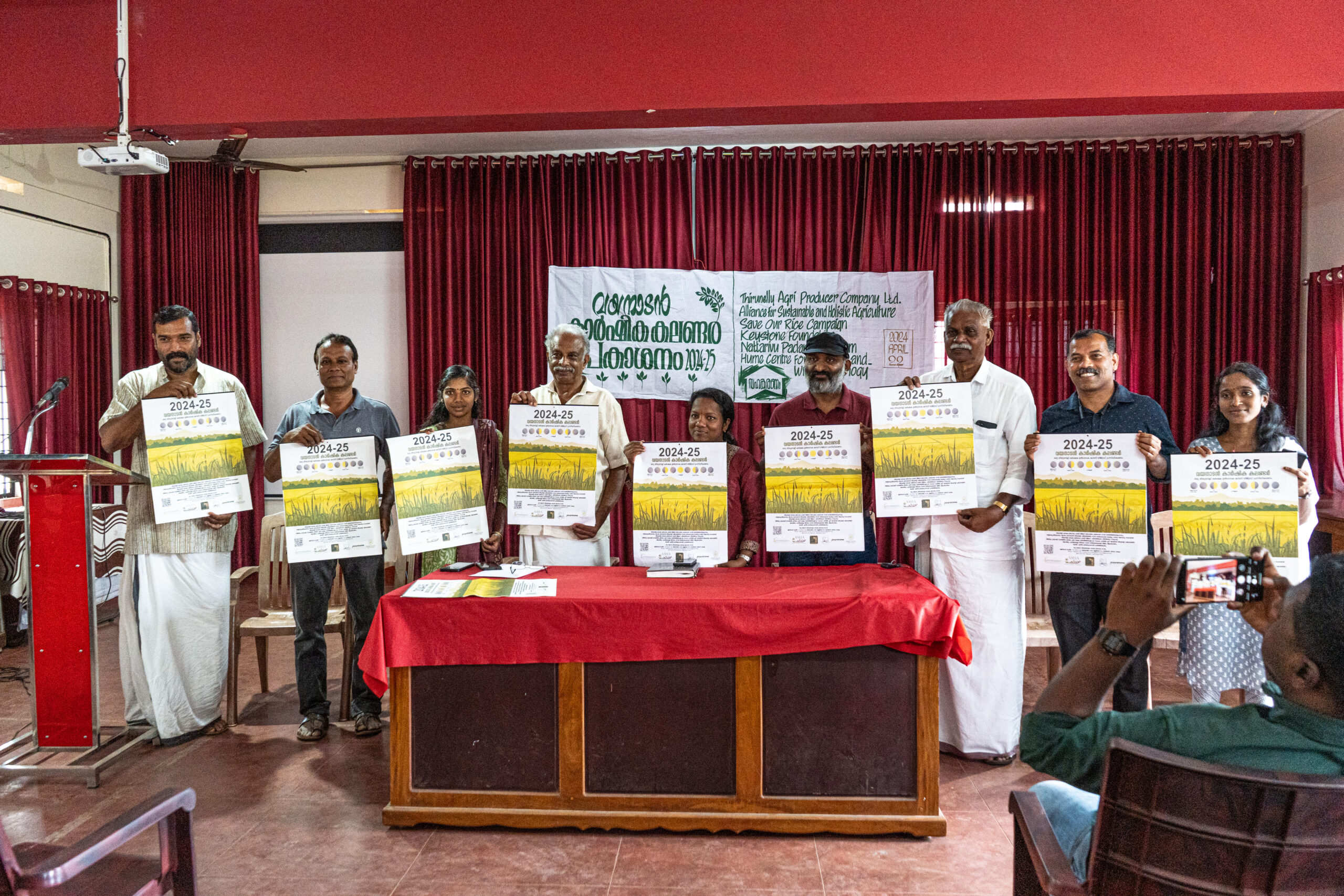“Would you believe if we told you there are rural villages in the Nilgiris where women still have to wait for hours to access clean and safe drinking water? Would you believe if we told you that a lot of our communities defecate in the open due to lack of adequate sanitation facilities?”
Yes, this is a ground reality report from our work on Water and Sanitation with local communities in the Nilgiris.
Nilgiris is perceived to have 60 to 70% of the land under forests, but wait, Are they forests or are they plantations? The Geological Survey of India field report states that 70 % of the native vegetation was destroyed for establishing tea& other plantations, vegetable cultivation’s and more than 10% was denuded for residential purposes.
On an average of 3 to 4 million people visit the Nilgiris every year, and it is estimated that 70% of the annual revenue generated by the Hospitality industry in the Nilgiris in a year is from tourism. A lot of small and big businesses are dependent on the tourism industry for their livelihoods. Now that sounds like a good thing isn’t it?
Oh wait, it’s not over yet, the development in the tourist industry in the Nilgiris is pushing the hills off the cliff. The flip side of tourism throws light into how the pressure on the local resources is threatening the local ecology. Converting hilltops into resorts and guest houses, over-extraction of groundwater to meet the tourism needs, excessive generation of solid waste, diverting wastewater into streams and local water bodies, increased competition for resources triggering human-wildlife interactions and conflicts and the list goes on and on…
But what has it done to the local communities and their water? A big question no one is willing to talk about.
The local indigenous communities have been dependent for ages immemorial on upper catchment areas where springs originate to meet their drinking water needs. Lately, a lot of them have started reporting their springs dying or running dry at the end of the monsoon period. The sources which were once perennial and supplied water for an entire village throughout the year are now slowly disappearing.
A value conflict that we always encounter when talking to local communities, the local perception is that the spring water is cleaner and safer compared to valley source of water. The fact behind this is that the catchments were earlier a mosaic of forests and grasslands with no human footprint. Today the catchments are taken over by plantations, new houses are built in the mountaintops, the septic tanks are leaching into the underground springs and water sources. From our water monitoring data, we have found that 90% of the spring water sources used by communities in our working areas have tested coliform positive or shown the presence of coliform bacteria.
The E Coli bacteria in drinking water consumed by people are said to create gastrointestinal diseases, flu symptoms, abdominal cramps, and most importantly diarrhea. Diarrhea is the 3rd leading cause of death of children in India, and it accounts for 13% of all death per year in children under the age of 5 as per the journal of natural science, biology and medicine. Of India’s 2.3 million annual deaths among children, about 334000 are attributed to diarrhoeal diseases say a WHO report.
During the baselinesurvey in 5 panchayats in Coonoor, nearly half of the habitations stated thatthey were dependent on springs for their water supply. However, after cross-checking the sources we found that springs and wetlands were often usedsynonymously. We have separated these out and it turns out that one-fourth ofthe habitations are dependent only on springs for their water supply. Another18% – have springs as one of the sources, while 41% have wells as their onlywater source. In all, 87% of habitations in the five village panchayats dependonly on groundwater for their water supply. Thus along with springs, theimportance of wetlands is also highlighted through the baseline survey.
The following table is from our studies conducted across different working areas of Keystone foundation in the Nilgiris 2015-2018.
The survey also shows that most habitations in all three areas of Kotagiri, Coonoor and Sigur the prevalence of Open defecation is more compared to other villages/settlements.Out of the 126 villages surveyed, 28 villages have reported 100% respondents practicing open defecation and 55 villages have reported more than 50%respondents practicing open defecation, the remaining 26 villages have responded OD free (Data not available for 5 villages)
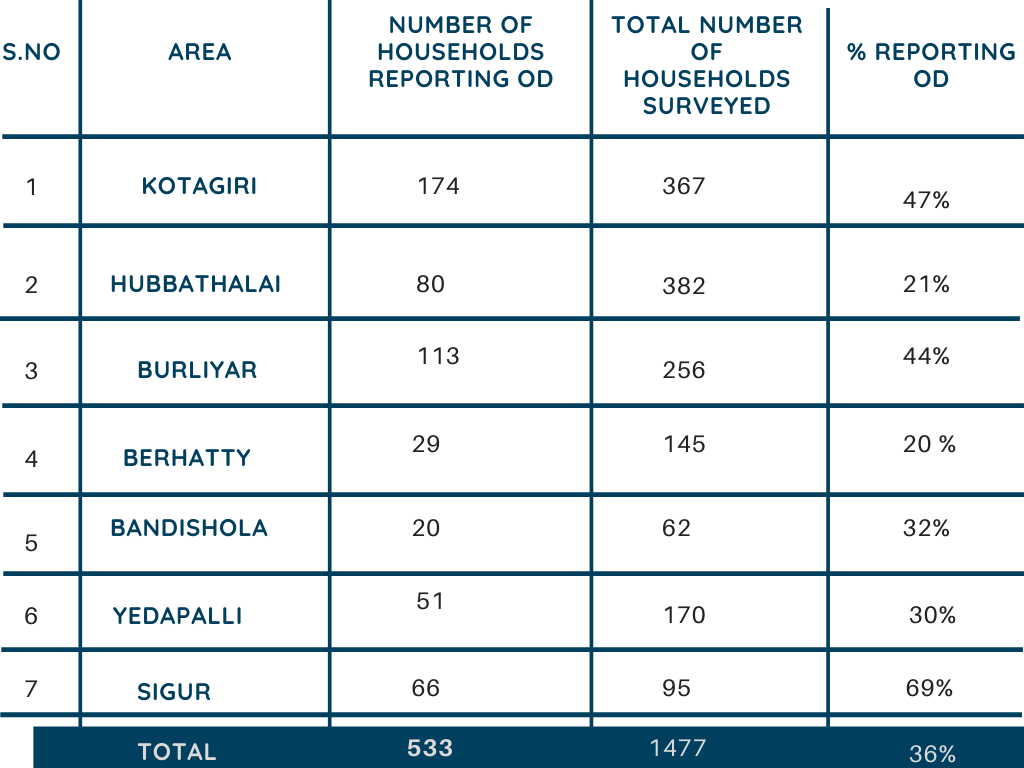
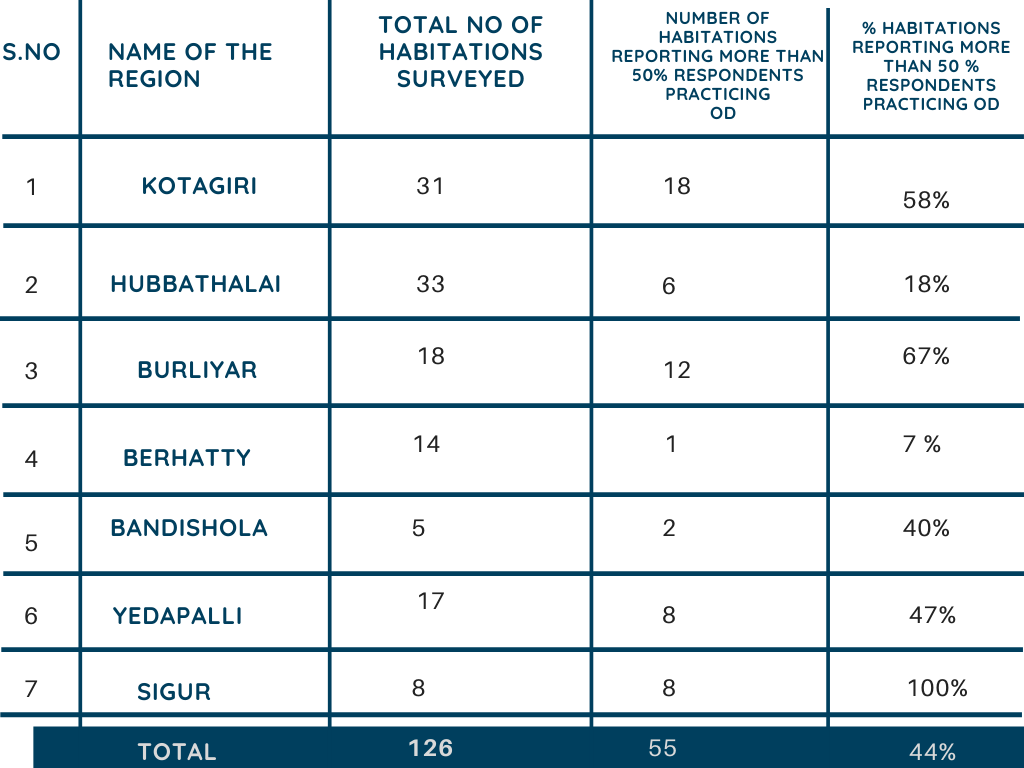
Now the local communities are not only complaining about the drying up springs, but also, the issues in water quality from the valley sources like open wells, borewells and streams. While this is a local story, the Central Ground Water board classifies Nilgiris as one of the safest zones in terms of availability of groundwater resources. The calculation is done based on the amount of average recharge from rainfall the district receives. So, Nilgiris is a Water Surplus District? Maybe. But is it accessible to the local communities and is the water safe for downstream people to use? We doubt…
So whatdo you think can be done?
A few approaches and strategies have been developed by Keystone to address these issues holistically. Through active engagements and consultation with the communities, the Water and Sanitation program has developed a tool kit which enables local communities to develop their own Village level Water Security Plans.
By Gokul Halan


